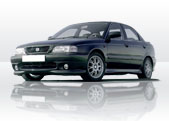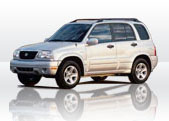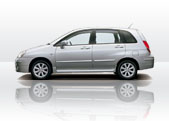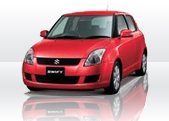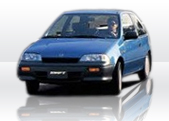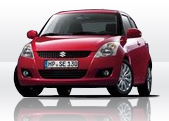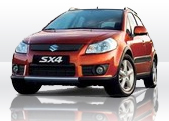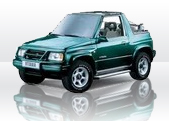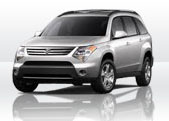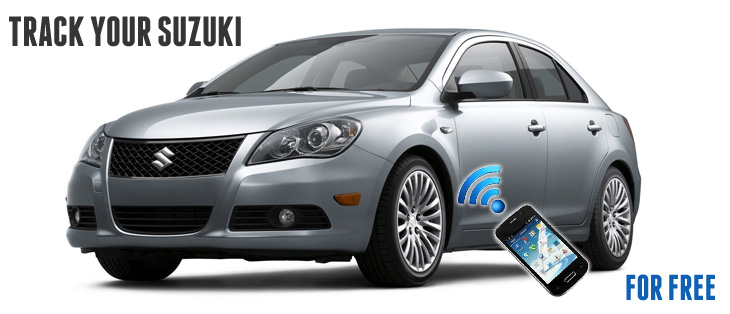
Suzuki Motor Corporation ( Suzuki Kabushiki - Gaish ) - Japanese company producing many models of cars, motorcycles, engines for motor boats and many other internal combustion engines for various applications . It belongs to the big four ( Suzuki , Yamaha , Honda and Kawasaki ) the largest distributors of motorcycles in the world . Suzuki has 15 factories in 14 countries and 133 distributors in 119 countries.
In 1909, Michio Suzuki founded the Suzuki Loom Company company in the small seacoast village of Hamamatsu, Japan. The company greatly expanded , as Suzuki built weaving looms for the Japanese silk industry . Suzuki's only desire was to build better , more user-friendly looms. In 1929 , Michio Suzuki invented a new type of weaving machine , which was exported to other countries. Suzuki filed 120 patents. For the first 30 years of existence the company , weaving looms were the main product and the direction of its development.
Despite the success of his looms , Suzuki realized that his company needs to develop in many directions , and therefore began to search for new industries in which to work. Based on consumer demand , he decided that the most practical new venture would be to create a small car . The project began in 1937 , and within two years Suzuki had completed several compact prototype cars. These first Suzuki motor vehicles were powered by a then -innovative, liquid-cooled , four-stroke , four-cylinder engine . Casing and gearbox cast aluminum . This engine produced 13 hp from a displacement of less than 800 cm3.
In connection with the outbreak of World War II, production plans for Suzuki were discontinued in connection with the announcement by the government that the civilian passenger cars a " non-essential commodity ." At the end of the war , Suzuki went back to producing looms. The further development of their production was associated with U.S. government approved the shipping of cotton to Japan. A growing market due to increased orders from domestic textile manufacturers . Boom ended , however, the cotton market collapsed in 1951 .
Having to cope with rapid change , Suzuki went back to thinking about the production of vehicles. After the war , the Japanese had a great need for affordable , reliable personal transportation . Many companies started selling gasoline -powered engines that could be attached to an ordinary bicycle. Suzuki's first transport industry was motorized bicycle called the "Power Free" . It was designed to be inexpensive and simple to build and maintain. Model 1952 had a two-stroke engine with a capacity of 36 cm3. A unique feature was the double-sprocket gear system , so that you can pedal with the engine assisting , pedal without engine assist , or simply disconnect the pedals and run on engine power . The system was so ingenious that the patent office of the new democratic government granted Suzuki a financial subsidy to continue research in motorcycle engineering . Thus was born the company Suzuki Motor Corporation.
In 1953 , Suzuki for the first time won the race. This was the " Diamond Free" with an engine capacity of 60 cm3, which took first place in the rally after the slopes of Mount Fuji .
By 1954, Suzuki was producing 6,000 motorcycles per month and had officially changed its company to Suzuki Motor Co. . , Ltd. Following the success of its first motorcycles, Suzuki created an even more successful automobile : " Suzulight " from 1955.
Suzuki from the outset showcased its penchant for innovation . Suzulight had front-wheel drive , independent suspension on all wheels and modern moving the steering wheel to the wheels - features that have become common on cars half a century later.
